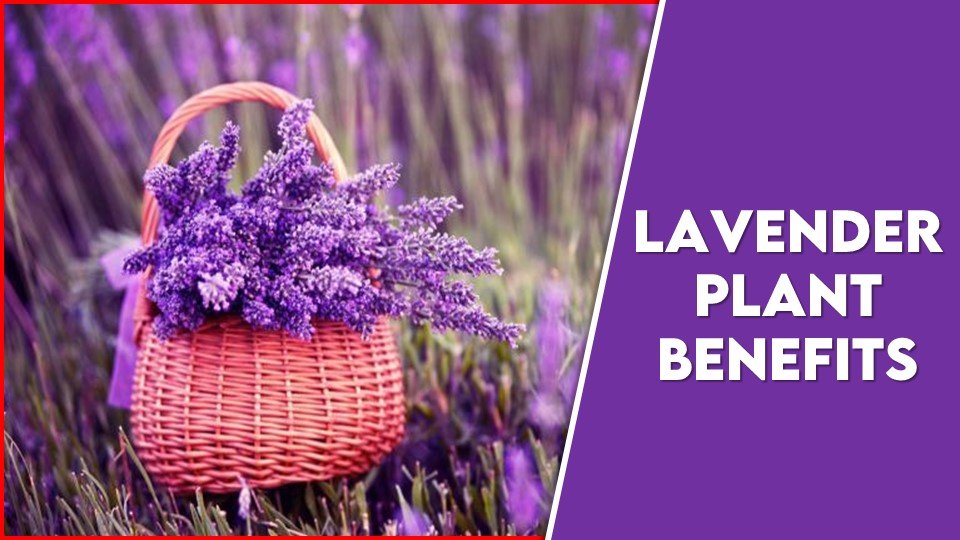Lavender is the favorite color for most people so is the lavender plant. Before getting into the topic of lavender plant Indoor benefits, let us know what and how exactly a lavender looks like. Most of us are unaware of the fact that lavender is one of the most luxurious colors in any industry, this is because there exists huge complexity in the extraction of its dye. The lavender color is usually a fine blend of purple and white. This color is often mistaken with the purple color which has a dark tinge.
The lavender plant is mainly cultivated to extract dye but apart from this it is also put into commercial use, especially in the cosmetic industry and it also possess great medicinal properties. There are many products in the market with a huge demand especially where lavender extract is used. Both skin and hair care products are being launched in the market where this particular lavender-based products are going on a trend. We shall also know how lavender is cultivated and what medicinal benefits it would offer.
About Lavender plant
It is scientifically called Lavandula. The aesthetic beauty of lavender and the most delightful fragrance of it will encourage every plant lover to begin its cultivation. The culinary industry is also being benefitted as lavender is said to offer culinary applications. It has narrow leaves which possess an aroma. The flowers are blossomed in clusters which gives a good fragrance and come in shades of purple and white. The entire lavender farm is visually stunning. One can never miss the beauty of a lavender farm if you have ever been to it. The shades of flowers and the extent of aroma may vary depending on the species.
It typically grows as a compact shrub with a bushy or mounded growth habit, reaching heights of 1 to 3 feet, though some varieties can grow taller. Nowadays, the cultivation has spread to the boundaries across the world. For the best outcome, one has to start growing it in well-drained soil and in a place where it receives good sunlight. Lavender is relatively drought-tolerant once established and doesn’t require much fertilizer. Never overwater the plants as it may result in death of the plants.
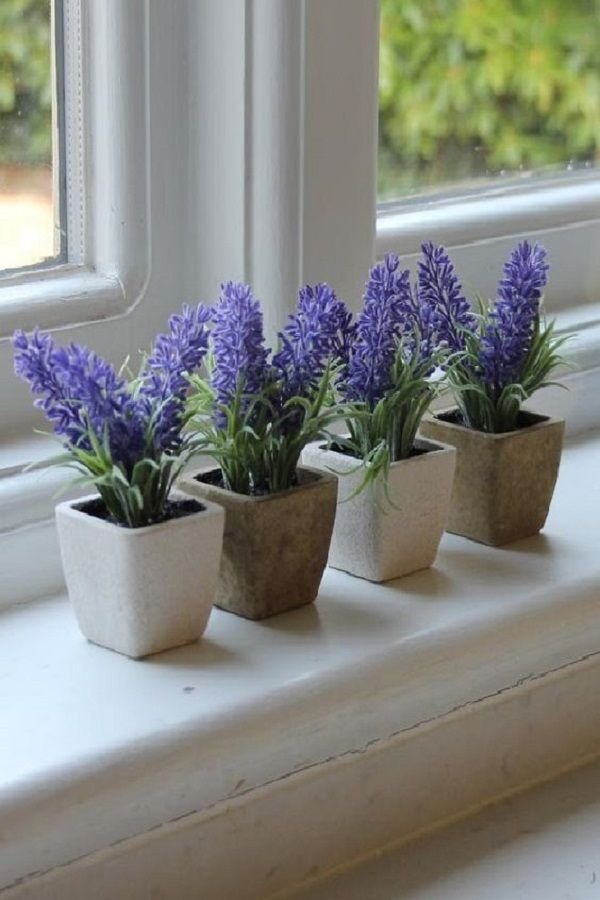
Watering has to be done after checking the moisture levels and optimum water has to be given to avoid the attack of fungal diseases and prevent root rot. Apart from the above-mentioned benefits, it also has a few applications in the culinary industry where few beverages are made some dishes are served where extract of lavender is used as an ingredient. The most essential lavender oil is extracted from the flowers and is used in aromatherapy and other applications. The flowers of lavender have a very attractive color that attracts many pollinators such as butterflies and bees which in turn aids in pollination.
Lavender Plant Indoor Benefits
- Antimicrobial and Antiseptic Properties : Lavender exhibits antimicrobial and antiseptic properties, making it useful for disinfecting wounds, cuts, and minor burns. The lavender essential oil can be diluted and applied topically to clean and protect minor injuries from infection. Additionally, lavender hydrosol (the floral water produced during the steam distillation of lavender oil) can be used as a gentle antiseptic for skin care.
- Respiratory Support : Inhaling the steam from lavender-infused hot water or using lavender essential oil in a vaporizer may help relieve respiratory issues such as congestion, coughs, and sinusitis. All the respiratory inconveniences are healed because of the antimicrobial properties exhibited by the lavender.
- Improved Sleep Quality : Lavender is often used as a natural remedy for insomnia and sleep disturbances. Research has also been done on lavender oil where inhaling its scent right before your bedtime can help you with the problem of insomnia and give you a better sleep by which a better sleep quality can be induced. Lavender essential oil can be diffused in the bedroom or added to pillows and bedding for this purpose.
- Skin Care Benefits : Lavender is beneficial for skin health and is commonly used in natural skincare products. If you are having a problem with dryness and need enough moisturization, applying lavender oil can help you treat this problem. Lavender essential oil is often included in creams, lotions, soaps, and balms for its skincare benefits.
- Pain Relief : Lavender has analgesic (pain-relieving) properties and is sometimes used topically to alleviate minor aches and pains, including headaches, muscle soreness, and joint pain. The lavender essential oil can be diluted with a carrier oil and applied to the affected area as a soothing massage oil.
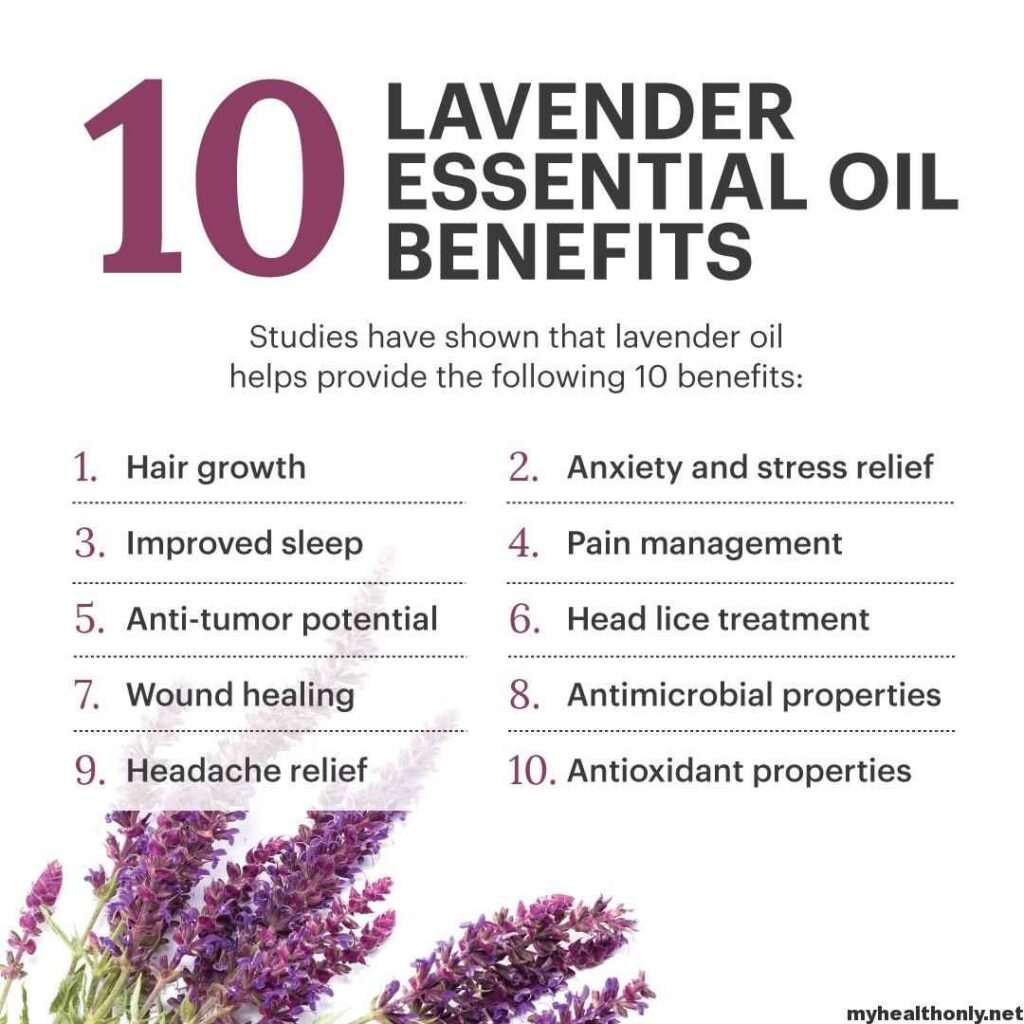
- Anti-inflammatory Effects : It also possesses good anti-inflammatory properties. If you are having swelling immediately after a burn or any insect bite, apply lavender oil by which the inflammation gets reduced. The application of lavender oil or lavender-infused creams and ointments may provide relief from inflammation.
- Relief From Stress: One of the most familiar benefits of lavender is its contribution in aiding relaxation and reducing stress. The aroma of lavender doesn’t need special attention of course. This aroma will help have a soothing effect which will relieve you from stress and anxiety. The essential oil of lavender is popular for its application in aromatherapy where you will be exposed to specific aromas that make you relaxed.
Also Read:
How To Grow Lavender
Right Location
Lavender is a sun-loving plant, so it has to be placed in your garden that receives at least 8 hours of direct sunlight daily. Make sure that the location you choose should be well aerated. Proving proper air circulation will prevent moisture build-up which would attract fungal diseases.
Prepare the Soil
Lavender prefers well-draining soil with a pH level between 6.5 and 7.5. If your soil is heavy or clayey, amend it with sand, gravel, or perlite to improve drainage. The plantation can also be done in raised beds or any containers provided that the soil has to be well drained.
Planting
Lavender can be grown from seeds, cuttings, or nursery-grown plants. If starting from seeds, sow them indoors in early spring, as lavender seeds require warm temperatures to germinate. Transplant seedlings outdoors after the danger of frost has passed. For nursery-grown plants or cuttings, plant them in the prepared soil, spacing them 12-18 inches apart.
Watering
Lavender is drought-tolerant once established, so be cautious not to overwater. Water newly planted lavender regularly to help establish the roots, but once established, water sparingly, allowing the soil to dry out between waterings. Water at the base of the plant to avoid wetting the foliage, which can lead to fungal problems.
Fertilizer
Lavender doesn’t require much fertilization and can thrive in nutrient-poor soil. Avoid high-nitrogen fertilizers, as they can promote excessive foliage growth at the expense of flower production. Instead, apply a low-nitrogen, balanced fertilizer sparingly in spring.
Pruning
Regular pruning helps keep lavender plants compact, promotes bushier growth, and prevents them from becoming woody. Prune lavender in early spring, just as new growth emerges, by cutting back about one-third of the plant’s height. Remove any dead or woody stems, as well as spent flower spikes, to encourage continuous blooming
Pest and Disease Management
Lavender is resistant to pests and diseases, but occasionally it may be affected by issues such as root rot, fungal diseases, aphids, or spider mites. Overwatering should never be done. Insecticidal soap or neem oil can be used to control aphids and spider mites if necessary.
Winter Protection
In colder climates, lavender benefit from winter protection to prevent frost damage. Mulch around the base of the plants with a layer of straw or pine needles to insulate the roots and protect them from freezing temperatures.
Also Read
Conclusion
We have been introduced to the lavender plant. Next, we have learned some basic details of it, and the most important growing process of lavender is covered last but not least the ultimate benefits lavender is offering have been known. The benefits of lavender in the cosmetic industry and the medical industry have been discussed in brief. Culinary applications are not much to deal with and to be precise the lavender extract is used in certain beverages like tea.
Some of the dishes are also made using lavender extract as an ingredient. Just begin the lavender cultivation and you would be wondered to see its applications in the cosmetic industry. Lavender essential oil is in huge demand in the market. Lavender oil is used in almost all the products mentioned above and the product range is expanding tremendously.
Lavender oil is used in combination with other oils such as eucalyptus and argan and the result of this combination has turned out to be great. You can start growing it on a small scale and market the raw produce or you can set up your distillation unit and market the oil or you can also opt for making all those products and make your branding and market the products. A good and authentic market research has to be done before getting into it and good business management skills are needed to manage the business effectively.
Latest Plant
- Study Agriculture Abroad : A Complete Guide for USA

- July Issue (2024): Times of Agriculture Magazine

- Why Money Plant is called Money Plant ? Answer in 5 min

- How to grow Monstera from Cutting: 5-Step Detailed Guide

- Latest 10 Finest Terrace Garden Ideas to Transform Your Rooftops

- Top 10 Low Light Hanging Plants to make your Room Crunchy

- Best Water Harvesting Techniques for a Sustainable Future
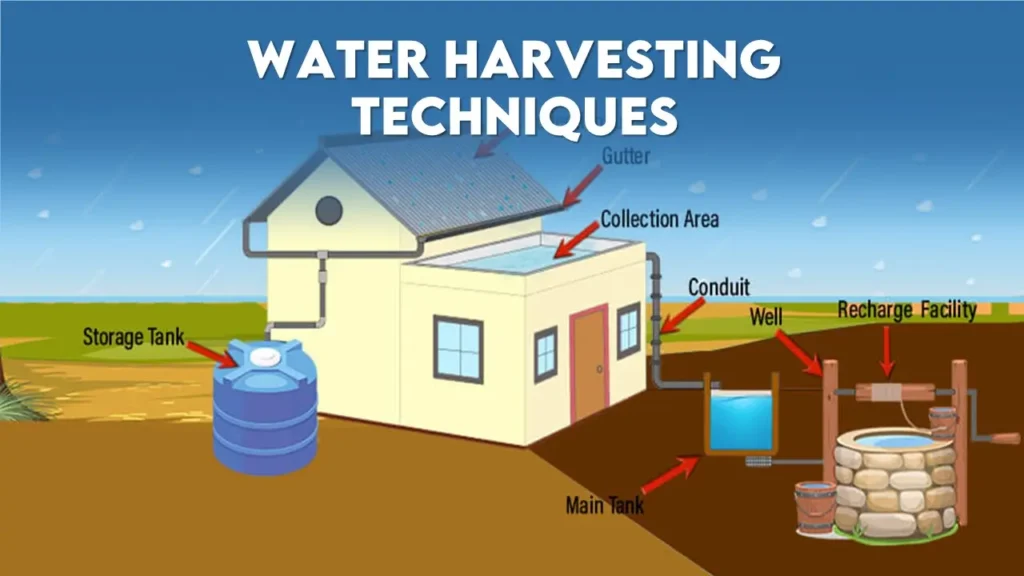
- Low Maintenance Indoor Plants for India: 15 Best plants for home gardening
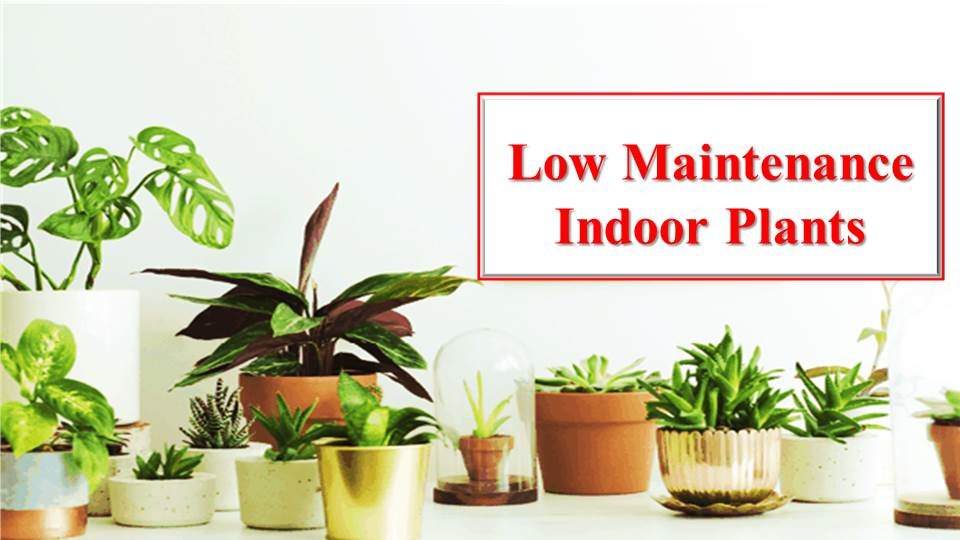
- Top 23 Flowering Trees in India: Flower Tree for Home



